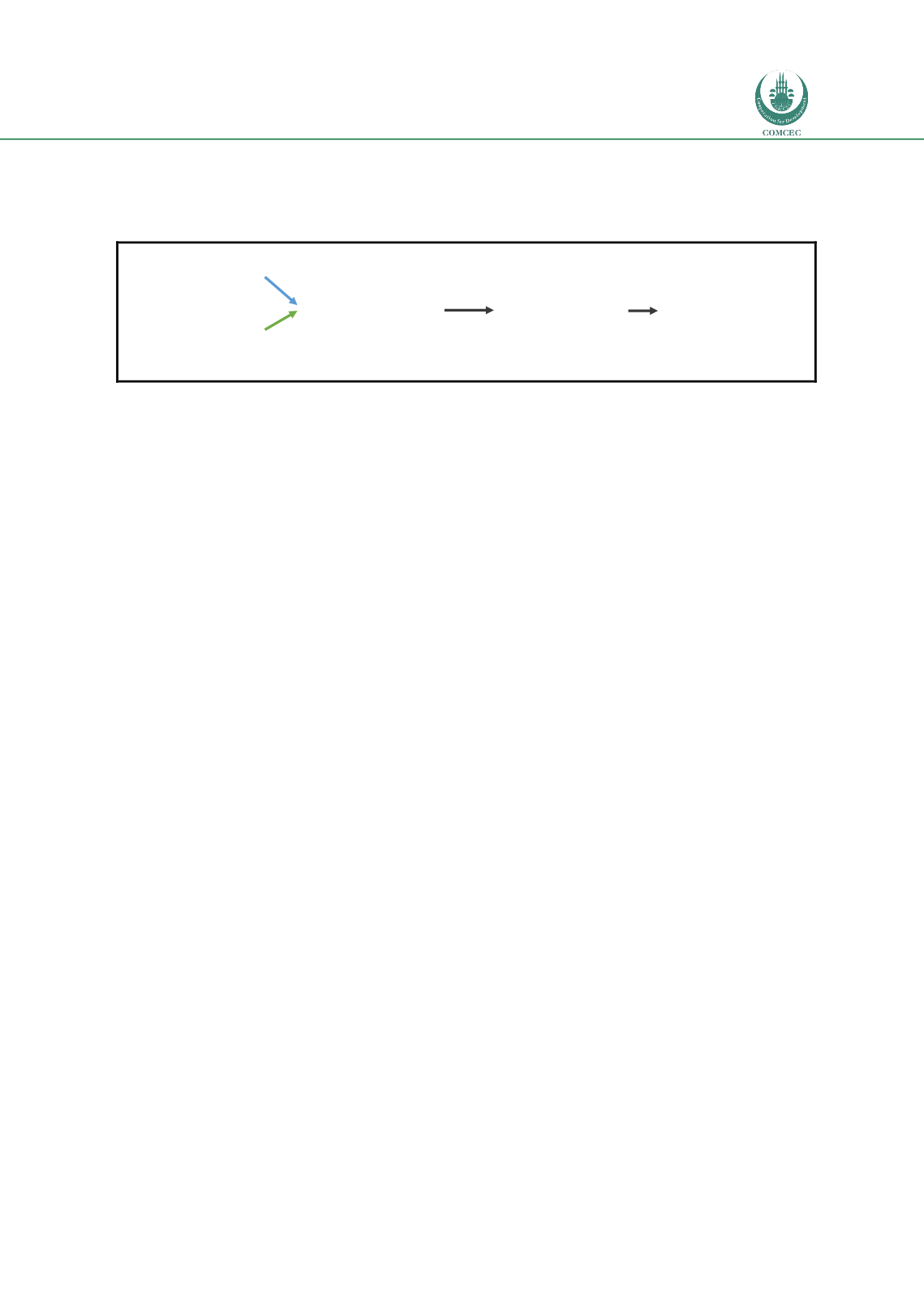

Reducing Postharvest Losses
In the OIC Member Countries
125
The Value Chain
The basic value chain is shown in Figure 19.
Figure 19: Basic value chain for fish and seafood
Capture
Culture
(aquaculture)
Consolidation
Processing
Presentation
to Market
Fish and other sea-foods are produced by a wide range of players. These can be broadly
segmented as follows:
Large scale, industrial capture:
Typically large scale, capital intensive, high level of
technology; Targeting species such as Tuna.
Medium Scale Commercial Capture:
Possibly the largest segment in Indonesian
fishing. A wide range of fishing methods used, targeting a very wide range of species.
Small Scale / Artisanal Capture:
Smaller vessels, usually under 10 meters, lower
investment costs, generally, but not always servicing the local market.
Large Scale Commercial Aquaculture:
Pond or cage based, high investment,
generally farming shrimp of fin fish for further processing.
Medium Scale Commercial Aquaculture:
A growing sector, similar to large scale, but
less capital intensive.
‘Backyard Ponds’ Aquaculture:
Largest sector in terms of participants. Significant
impact on nutrition and food security.
The processing and marketing of fish is equally complex. The processing/handling sector and
the products that are produced can broadly be segmented as:
Consolidation of fresh product & distribution producing iced and fresh fish for
consumption and further processing;
Icing producing fresh fish, mostly for domestic consumption;
Processing on board (freezing) producing frozen fish and seafood for both export and
domestic markets;
Freezing in relatively sophisticated factories, working to zero loss and serving the high
end retail market (domestic and import)
Canning producing canned tuna for export and canned small pelagic species for mostly
domestic consumption.
Traditional processing. Producing a wide variety of dried, smoked, salted and
fermented product for domestic consumption.
This list is not exhaustive.
The Role of the Government
The Ministry of Marine Affairs and Fisheries (MMAF) is responsible for setting policy and for
overall management of the fisheries and aquaculture sectors.
















